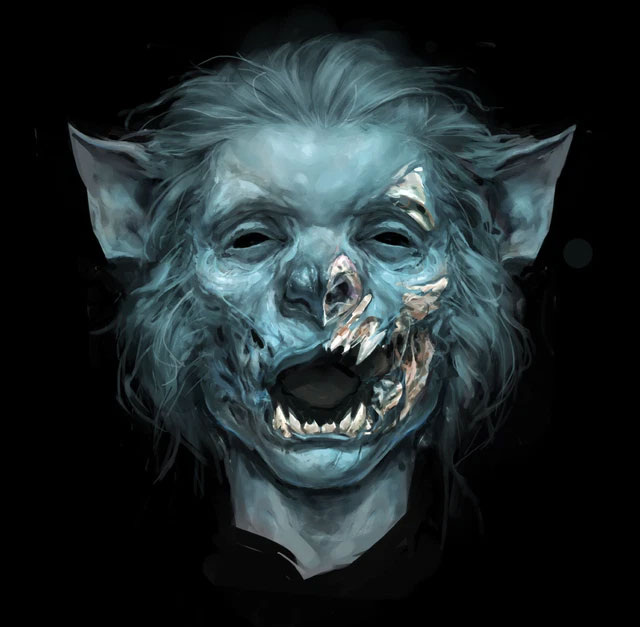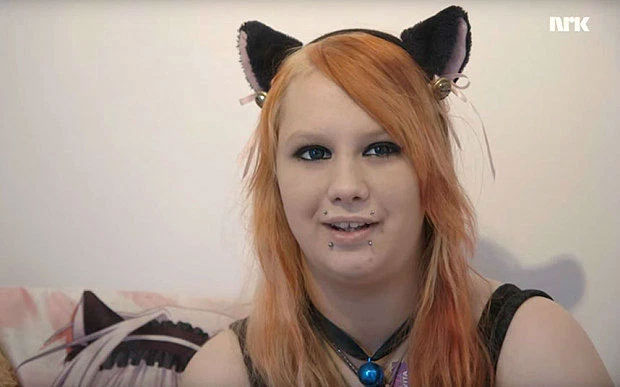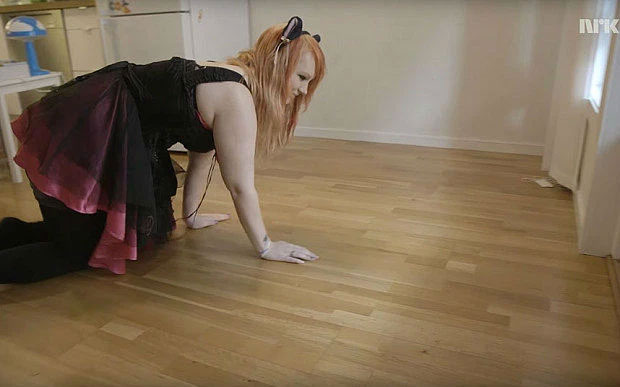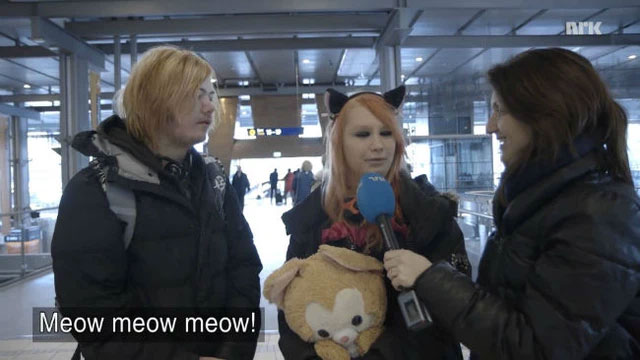Today’s character is a woman from Norway who always believes that she is a cat trapped in a human body.
A quick Google search for the phrase “psychological condition where human believes he is an animal” will yield countless results and a variety of links leading to different disorders. However, perhaps the most prominent result is clinical Lycanthropy, which is the most typical syndrome for this condition.
It is defined as a rare mental disorder, a clinical syndrome characterized by a delusion that affected individuals can transform or change into an animal, generally not human, but typically a wolf.

Lycanthropy is derived from ancient Greek, with lykos meaning wolf and anthropos meaning man.
However, upon further investigation, Google suggested another term – Species Dysphoria. It is described as a psychological syndrome where individuals believe that their true self is not human; instead, they are an animal species. Psychologists describe those with this syndrome as “individuals who believe they are a specific animal species, or that an animal spirit has been embodied in a human body.” Species Dysphoria can include sensations of phantom limbs related to the species, such as wings, claws, tails, or a sense that the body they inhabit is not their own.
To better understand this syndrome, we can explore the story from the perspective of those affected. Today’s character is a woman named Nano, from Oslo, Norway, and you may spend quite some time searching for information about her on Google.

This girl always believes she is a cat.
In a YouTube video, Nano claims that she possesses many characteristics of a cat, such as acute hearing, excellent vision, and a strong dislike of water. She expresses her true identity by wearing cat ears, paw gloves, and an artificial tail. “I am just like a cat with my meowing sounds,” Nano shares.
Nano claims she first realized she was a cat when she was 16 years old. This was also the time when doctors and psychologists diagnosed her as “having a genetic defect.” However, for Nano, this was evidence of the “cat part” within her. “The confusion of creation made me born human,” Nano stated. “The psychologist thinks I can overcome my ‘cat’ habits, but I don’t believe so.”

Doctors believe she has a genetic defect.
Due to such strong claims, she was even approached by the American television show The Young Turks. As Nano walked through the central station of Oslo, the reporter asked her to identify things she could see or hear that human senses could not perceive.
Nano quickly focused on the sounds of rolling suitcases on the ground, keys jingling in pockets, and the sound of people stepping on gravel. According to the Norwegian woman, this enhanced hearing ability is one of the greatest advantages of being a cat. She also claimed to have the ability to see in the dark. “I can see better in the dark than in daylight,” she said. “I have chased after animals many times at night because I can see in the dark.” However, Nano has never caught a mouse, despite her best efforts.

Despite believing she is a cat, Nano has never caught a mouse.
Nano believes that her personality and psychological traits prove that the cat part overwhelms the human part within her. She states that she feels more comfortable moving on her hands and knees than standing on two feet.
Her relationship with the closest human friend is also not very good. She often hisses at the sight of a dog and explains that: “…that is due to my cat behavior, and my instinct is to automatically react by hissing.” Her habits and behaviors closely resemble those of a cat. She admits that she enjoys sleeping in the sink or on the windowsill. At one point, when the reporter asked Nano if she was born in a body that does not match her species, Nano affirmed that this was entirely true.

Nano is not alone; a guy named Svein also thinks he is a cat.
However, Nano is not alone; she also has a friend named Svein, who is known to possess various characteristics, one of which is being a cat. During an interview with Svein, he revealed that the two often communicate by meowing. To demonstrate, Nano produced a series of meows that were said to mean “Come on, let’s go.” Svein confirmed that he understood each of them.
“Suddenly, I start meowing, or she meows, and then we respond to each other and communicate in cat language,” he said. Ultimately, Nano remarked that living like a cat exhausts her, but she has no intention of changing her innate qualities. “I believe I will always live as a cat.”


















































